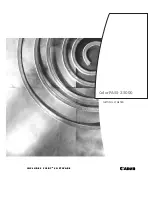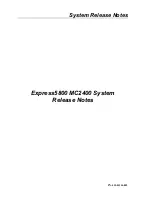
Technology Overview
10
From a networking perspective, the Cisco UCS 6300 Series uses a cut-through architecture, supporting
deterministic, low-latency, line-rate 10 and 40 Gigabit Ethernet ports, switching capacity of 2.56 terabits per
second (Tbps), and 320 Gbps of bandwidth per chassis, independent of packet size and enabled services. The
product family supports Cisco® low-latency, lossless 10 and 40 Gigabit Ethernet unified network fabric
capabilities, which increase the reliability, efficiency, and scalability of Ethernet networks. The fabric interconnect
supports multiple traffic classes over a lossless Ethernet fabric from the server through the fabric interconnect.
Significant TCO savings can be achieved with an FCoE optimized server design in which network interface cards
(NICs), host bus adapters (HBAs), cables, and switches can be consolidated.
The Cisco UCS 6332 32-Port Fabric Interconnect is a 1-rack-unit (1RU) Gigabit Ethernet, and FCoE switch
offering up to 2.56 Tbps throughput and up to 32 ports. The switch has 32 fixed 40-Gbps Ethernet and FCoE
ports.
Both the Cisco UCS 6332UP 32-Port Fabric Interconnect and the Cisco UCS 6332 16-UP 40-Port Fabric
Interconnect have ports that can be configured for the breakout feature that supports connectivity between 40
Gigabit Ethernet ports and 10 Gigabit Ethernet ports. This feature provides backward compatibility to existing
hardware that supports 10 Gigabit Ethernet. A 40 Gigabit Ethernet port can be used as four 10 Gigabit Ethernet
ports. Using a 40 Gigabit Ethernet SFP, these ports on a Cisco UCS 6300 Series Fabric Interconnect can connect
to another fabric interconnect that has four 10 Gigabit Ethernet SFPs. The breakout feature can be configured on
ports 1 to 12 and ports 15 to 26 on the Cisco UCS 6332UP fabric interconnect. Ports 17 to 34 on the Cisco
UCS 6332 16-UP fabric interconnect support the breakout feature.
Cisco UCS 9332 Nexus Switches
The Cisco Nexus 9000 Series Switches include both modular and fixed-port switches that are designed to
overcome these challenges with a flexible, agile, low-cost, application-centric infrastructure.
The Cisco Nexus 9300 platform consists of fixed-port switches designed for top-of-rack (ToR) and middle-of-
row (MoR) deployment in data centers that support enterprise applications, service provider hosting, and cloud
computing environments. They are Layer 2 and 3 nonblocking 10 and 40 Gigabit Ethernet switches with up to
2.56 terabits per second (Tbps) of internal bandwidth.
The Cisco Nexus 9332PQ Switch is a 1-rack-unit (1RU) switch that supports 2.56 Tbps of bandwidth and over
720 million packets per second (mpps) across thirty-two 40-Gbps Enhanced QSFP+ ports
All the Cisco Nexus 9300 platform switches use dual- core 2.5-GHz x86 CPUs with 64-GB solid-state disk
(SSD) drives and 16 GB of memory for enhanced network performance.
With the Cisco Nexus 9000 Series, organizations can quickly and easily upgrade existing data centers to carry 40
Gigabit Ethernet to the aggregation layer or to the spine (in a leaf-and-spine configuration) through advanced and
cost-effective optics that enable the use of existing 10 Gigabit Ethernet fiber (a pair of multimode fiber strands).
Cisco provides two modes of operation for the Cisco Nexus 9000 Series. Organizations can use Cisco NX-OS
Software to deploy the Cisco Nexus 9000 Series in standard Cisco Nexus switch environments. Organizations
also can use a hardware infrastructure that is ready to support Cisco Application Centric Infrastructure (Cisco ACI)
to take full advantage of an automated, policy-based, systems management approach.
Содержание UCS S3260 M5
Страница 25: ...Solution Design 25 ...











































